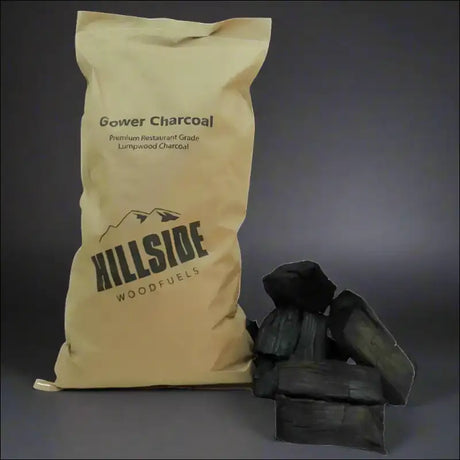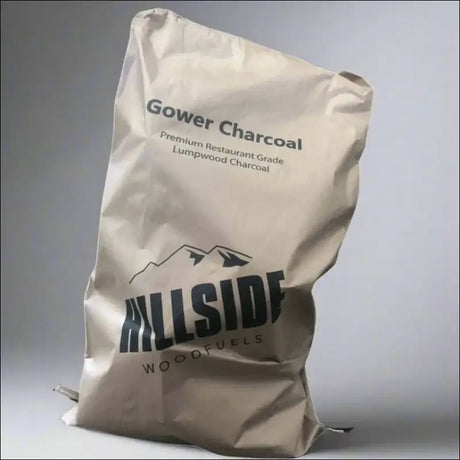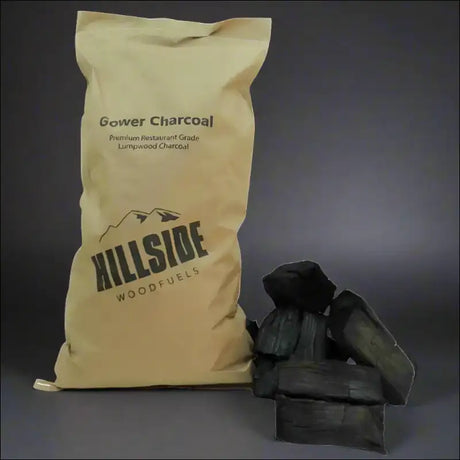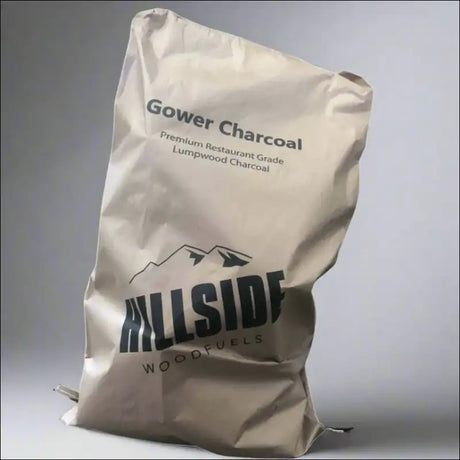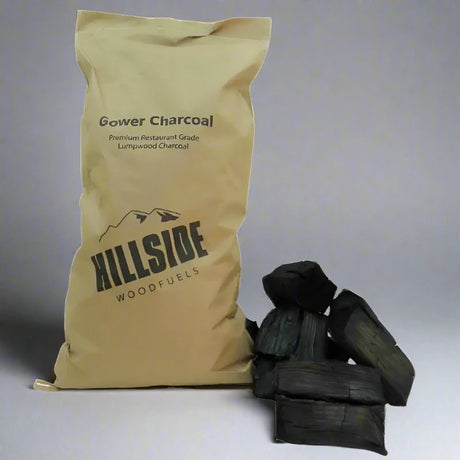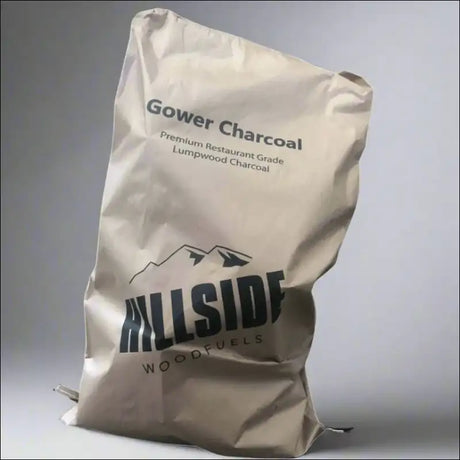Grilling is a beloved tradition, but it comes with the responsibility of managing the waste it produces. Charcoal ash, the by-product of burning charcoal, can be a little tricky to dispose of in a safe and eco-friendly manner or better yet find an alternate use for... So lets talk about handling charcoal waste, from understanding the different types to exploring sustainable disposal options. We'll cover the entire process, from pre-grill preparation to post-grill disposal, and even provide creative ideas for repurposing charcoal ashes.
Key Takeaways
- Recognize the environmental impact of different types of charcoal and learn safe disposal methods to minimize harm.
- Prepare in advance with eco-friendly charcoal options and proper grill setup to reduce waste and simplify cleanup.
- Follow correct procedures to extinguish charcoal safely and handle ash storage until it can be disposed of responsibly.
- Discover innovative ways to give new life to charcoal ashes, such as enriching garden soil or creating homemade cleaning agents.
- Consider alternative grilling options like biomass briquettes, lump charcoal, or electric and gas grills for a more sustainable BBQ experience.
Understanding Charcoal Waste
Types of Charcoal and Their Respective Waste
When we grill, the type of charcoal we use can significantly impact the amount of waste we produce. Lump charcoal, made from hardwood, leaves minimal ash and is considered a purer form of charcoal. It's perfect for those of us who prefer a quick and hot fire, as it lights faster and burns hotter than briquettes. On the other hand, briquettes are uniform in shape and size, providing a consistent burning temperature. However, they tend to leave behind more ash due to the additives and binders used in their production.
Restaurant grade charcoal is pricier but burns efficiently, produces less ash, and enhances flavor. Ideal for high-heat searing and smoking, with longer burn time and less smoke. Not recommended for indoor use due to the potential for carbon monoxide buildup.
It's essential to consider the waste each type of charcoal produces. While lump charcoal may be more eco-friendly with less ash, briquettes offer convenience at the cost of more cleanup. Choosing the right charcoal can make a significant difference in our post-grill cleanup efforts.
Here's a quick comparison of the waste produced by different types of charcoal:
- Lump Charcoal: Low ash, high heat, quick burn
- Briquettes: More ash, consistent heat, longer burn
- Restaurant Grade Charcoal: Low ash, high heat, long burn, less smoke
Hazards of Improper Charcoal Disposal
When we dispose of charcoal improperly, we're not just affecting our immediate environment; the repercussions can ripple outward, impacting ecosystems and potentially harming wildlife. Improper disposal of hot coals can lead to fires, which not only pose a threat to property but also to the natural habitats surrounding our grilling areas.
Chemical contaminants from processed charcoal can leach into the soil and waterways, disrupting the delicate balance of local ecosystems. These contaminants can be especially harmful if the charcoal waste contains lighter fluid or other additives. It's crucial for us to understand that what we leave behind can have a lasting impact.
By being mindful of how we dispose of our grilling waste, we can prevent unnecessary pollution and promote a healthier environment for all.
Here are some of the key hazards associated with improper charcoal disposal:
- Risk of fire from hot embers
- Pollution from chemical additives
- Soil and water contamination
- Threat to wildlife and plant life
- Increased carbon footprint
Estimating the Amount of Waste Post-Grilling
After a delightful afternoon of grilling, we're often left with the question: how much waste did we actually produce? Estimating the amount of charcoal waste is crucial for planning eco-friendly disposal. We can start by considering the type of grill and the duration of its use.
For a standard grill session, here's a rough guide to help us gauge the waste:
- Small grill (1-2 hours): 1-2 pounds of charcoal
- Medium grill (2-4 hours): 2-4 pounds of charcoal
- Large grill (4+ hours): 4+ pounds of charcoal
Remember, these are just estimates and actual amounts can vary. It's always better to overestimate rather than underestimate, to ensure we have a proper disposal plan in place.
By being mindful of the charcoal waste we generate, we can take the first step towards a more sustainable grilling experience. Let's make sure to adjust our cleanup plans according to the size of our feast!
Pre-Grill Preparation for Easier Cleanup
Choosing Eco-Friendly Charcoal Options
When we prepare for a grilling session, selecting the right charcoal is crucial not only for the flavor and efficiency of our cookout but also for the environment. Eco-friendly charcoal options are available that reduce our carbon footprint and minimize harmful byproducts.
Biodegradable charcoal briquettes, for instance, are made from coconut shells, wood scraps, and other natural materials that decompose more easily than traditional charcoal. These alternatives often come from sustainable sources and produce less ash, making post-grill cleanup simpler and safer for the environment.
- Coconut shell charcoal
- Wood scrap briquettes
- Sawdust logs
By choosing these eco-friendly options, we ensure that our grilling habits contribute positively to environmental conservation while still enjoying the pleasures of outdoor cooking.
Setting Up Your Grill for Minimal Waste
When we're eager to enjoy a good barbecue, it's easy to overlook the setup of our grill. However, taking a moment to optimize our grill for minimal waste can make a significant difference. We should start by selecting a grill surface that's easy to clean and maintain. A well-maintained grill not only reduces the need for excessive cleaning agents but also ensures that our grilling is as efficient as possible, using less charcoal overall.
To further minimize waste, we can use firelighters that are 100% natural and sustainable. These eco-friendly starters are not only better for the environment but also enhance the flavor of our food by avoiding unwanted tastes or smells. Here's a simple list to help us remember what to use for an eco-conscious grilling session:
- 100% natural, sustainable firelighters
- Stainless steel grill brushes
- Reusable grill mats
- Drip pans made of recyclable materials
By being mindful of the products we use to set up our grill, we're not only making cleanup easier but also contributing to a healthier environment. Let's make every effort to reduce our carbon footprint while enjoying the pleasures of outdoor cooking.
Tools and Accessories to Simplify Cleanup
In our quest for a hassle-free grilling experience, we've discovered a few key tools and accessories that make cleanup a breeze. Grill brushes and scrapers are essential for removing debris from the grates before it hardens. Using a grill mat can also significantly reduce the mess, catching drips and spills that would otherwise burn onto the grill.
- Grill brush: For scrubbing grates clean.
- Grill scraper: To remove stubborn residue.
- Grill mat: To catch drips and make cleanup easier.
- Ash can: For safe ash disposal.
- Heat-resistant gloves: To handle hot components safely.
Remember, investing in quality tools not only simplifies the cleanup process but also extends the life of your grill. Proper maintenance ensures that your grilling equipment remains in top condition, ready for your next barbecue adventure.
Safe Disposal of Used Charcoal
Extinguishing Charcoal the Right Way
After a delightful grilling session, we must ensure that the charcoal is extinguished properly. Safety is paramount, and proper extinguishment prevents the risk of fire and reduces the environmental impact. Here's how we can do it effectively:
- First, close the grill lid and any vents to cut off oxygen and let the charcoal burn out completely. This process can take up to 48 hours.
- If time is of the essence, carefully douse the hot coals with water, stirring them to ensure all embers are extinguished. Be mindful of the steam and potential ash flare-ups.
- Once the coals are cool, transfer them to a metal container with a tight-fitting lid to prevent reignition.
Remember, never dispose of hot ashes in compost bins, garbage cans, or anywhere they can come into contact with flammable materials.
By following these steps, we not only keep ourselves and our environment safe but also prepare the used charcoal for proper disposal or repurposing.
Handling and Storing Ashes Until Disposal
Once we've finished grilling, it's crucial to handle and store the ashes properly until we can dispose of them. Ensure the ashes are completely cool before attempting to move them. This might take several hours or even a day. We can expedite this process by spreading the ashes out in a metal container and stirring them occasionally to release trapped heat.
For storage, we recommend using a metal bucket with a tight-fitting lid to prevent any moisture from getting in. Moisture can turn ashes into a hard, cement-like substance that is difficult to handle. Place the bucket in a cool, dry area away from any flammable materials. It's important to label the bucket clearly to avoid any confusion with other substances.
Ashes can be repurposed in various ways, so consider storing them for future use in your garden or for homemade cleaning agents. If you choose to dispose of them, make sure to follow local regulations for eco-friendly disposal.
While waiting for disposal, remember that ashes can be a valuable resource. They contain potash and other minerals that can benefit your garden soil.
Here's a list of tips for storing ashes safely:
- Use a dedicated metal container with a lid.
- Keep the container in a secure, dry place.
- Label the container to prevent misuse.
- Consider repurposing the ashes instead of disposing of them immediately.
Where to Dispose of Charcoal Ashes Safely
Once we've ensured that the charcoal ashes are completely extinguished and cooled, it's crucial to know the safest ways to dispose of them. Not all disposal methods are created equal, and some can be harmful to the environment. We must consider the most eco-friendly options available.
- Municipal waste facilities: Check if your local waste facility accepts charcoal ashes. Some have specific guidelines for disposal.
- Composting: Hardwood charcoal ashes can be composted in small amounts.
- Trash collection: If no other options are available, seal the ashes in a metal container and dispose of them with your regular trash.
It's essential to avoid disposing of charcoal ashes in gardens, compost, or trash without first ensuring they are completely cool. Hot ashes can pose a fire hazard and cause damage to biodegradable materials.
Remember, the goal is to minimize our environmental footprint while enjoying the pleasures of grilling. By following these safe disposal practices, we contribute to a healthier planet.
Repurposing Charcoal Ashes
Enriching Your Garden with Charcoal Ash
We've all seen the remnants of a good barbecue: a pile of used charcoal. But before you think of it as waste, consider the benefits it can bring to your garden. Charcoal ash contains potassium, an essential nutrient that can enrich garden soil and promote plant growth. However, it's important to use it sparingly and only on non-acid loving plants, as it can raise the soil's pH level.
Charcoal ash should be cool and completely extinguished before you apply it to your garden. Here's a simple guide to using charcoal ash effectively:
- Ensure the ash is from untreated wood charcoal, not briquettes with additives.
- Sprinkle a thin layer of ash over your soil, or mix it into your compost heap.
- Use ash as a pest deterrent around the base of plants.
Remember, a little goes a long way. Overuse of charcoal ash can lead to soil imbalances, so it's crucial to monitor your garden's pH levels and adjust accordingly.
By repurposing charcoal ash, we not only reduce waste but also provide a natural supplement for our gardens. It's a win-win for us and the environment.
Homemade Ash-Based Cleaning Agents
We've discovered that the remnants of our grilling sessions can be transformed into effective cleaning agents. Charcoal ash, rich in potash, can be a key ingredient in creating homemade lye for soap making or as a natural abrasive for scrubbing tough grime. It's important to ensure the ash is completely cool and free from any leftover embers before use.
Charcoal ash is not only useful for our gardens but also for our homes. Here's a simple recipe for a homemade cleaning paste:
- 1 part charcoal ash
- 1 part water
- A small amount of natural dish soap
Mix these ingredients to form a paste that can tackle the grease and stains on your pots and pans. For a more potent mix, you can substitute water with vinegar, which enhances the cleaning power.
Remember, this paste is not suitable for delicate surfaces as it can be quite abrasive. Always test on a small, inconspicuous area first.
By repurposing our charcoal waste, we're not only reducing our environmental footprint but also embracing a more sustainable lifestyle. The next time you light up your grill with British Lumpwood Charcoal, consider the full lifecycle of your charcoal and the positive impact you can make by choosing eco-friendly options.
Creative Crafts with Leftover Charcoal
We've discovered that leftover charcoal can be much more than just waste; it can be a source of creativity. Transforming used charcoal into art can be a delightful way to recycle and engage in eco-friendly activities. For instance, charcoal pieces are excellent for sketching and creating beautiful monochrome drawings.
Charcoal dust, when mixed with a binder, can become a homemade paint for various craft projects. Here's a simple list of ideas to get you started:
- Charcoal sketching on paper or canvas
- Homemade charcoal paint for crafting
- Sculpting small figures or objects
Remember, always ensure the charcoal is completely cool and free of any live embers before using it for crafts. Safety first!
By choosing to repurpose our charcoal, we not only reduce waste but also embrace a sustainable lifestyle. And when we select our grilling materials, we always strive for the best. We choose sustainably harvested, domestically sourced lumpwood charcoal for better burning, minimal ash, and authentic wood-fired flavor. Opt for Gower Lumpwood for an eco-friendly, high-quality grilling experience.
Eco-Friendly Alternatives to Traditional Charcoal
Biomass Briquettes: A Sustainable Choice
As we explore eco-friendly alternatives to traditional charcoal, we cannot overlook the benefits of biomass briquettes. These briquettes are made from various organic materials such as sawdust, agricultural residues, or even paper. They serve as a sustainable choice for grilling, providing a quick, consistent heat source while being kind to the environment.
Biomass briquettes offer several advantages over conventional charcoal:
- They produce less smoke and soot, reducing air pollution.
- They have a lower carbon footprint, as they are made from renewable resources.
- They often come from local sources, supporting local economies and reducing transportation emissions.
By choosing biomass briquettes, we're not just preparing for a grilling session; we're making a conscious decision to reduce our environmental impact. This choice aligns with our commitment to premium charcoal options that do not compromise on the grilling experience.
Remember, while biomass briquettes are an excellent sustainable option, it's essential to source them from reputable suppliers to ensure they are produced responsibly and without causing deforestation.
Lump Charcoal: Natural and Minimally Processed
When we consider eco-friendly grilling, lump charcoal stands out as a prime option. Lump charcoal is made from pure hardwood without additives, providing a cleaner burn than standard briquettes. Its production process is simple: wood is burned in a low-oxygen environment until it carbonizes.
Charcoal lump is preferred by many for its ability to reach high temperatures and for imparting a natural smoky flavor to food. However, it's not just about the grilling experience; lump charcoal also offers environmental benefits:
- It produces less ash compared to briquettes, reducing waste.
- The absence of chemicals means it's safer for the soil if you choose to dispose of it in your garden.
- It's typically sourced from renewable hardwood, making it a more sustainable choice.
Remember, while lump charcoal is a more natural option, it's still important to handle it responsibly. Ensure that it's completely extinguished and cooled before disposal to prevent any risk of fire or environmental harm.
Electric and Gas Grills: A Cleaner Option?
When we consider the environmental impact of grilling, electric and gas grills present a cleaner alternative to traditional charcoal. They emit fewer pollutants and are more energy-efficient, making them a favorite for those of us who are eco-conscious. However, it's important to note that the cleanliness of these options can vary based on the source of electricity or the type of gas used.
Electric grills rely on electricity, which may be generated from renewable resources or fossil fuels. The eco-friendliness of electric grills hinges on the energy mix of your local grid. Gas grills, on the other hand, typically use propane or natural gas, which burn cleaner than charcoal but still contribute to fossil fuel consumption.
While neither option is perfect, they both offer significant reductions in waste and pollutants compared to charcoal grilling.
Here's a quick comparison of the two:
-
Electric Grills:
- No ash waste
- Lower emissions if powered by renewables
- Easy temperature control
-
Gas Grills:
- Quick heat-up time
- Convenient for frequent use
- Produces water vapor and CO2
Ultimately, the choice between electric and gas grills should be informed by your personal grilling habits, availability of resources, and desire to reduce your environmental footprint.
Conclusion
In conclusion, proper disposal of charcoal is crucial for both safety and environmental preservation. By following the eco-friendly methods outlined in this article, you can ensure that your post-grilling cleanup is responsible and sustainable. Remember to allow charcoal to cool completely, dispose of it in a metal container, and consider composting or repurposing when possible. By being mindful of the impact our grilling habits have on the environment, we can enjoy our barbecues while also protecting the planet. Let's commit to these safe and eco-friendly practices for a greener grilling experience.
Frequently Asked Questions
What are the different types of charcoal and how do they impact waste?
The primary types of charcoal are lump charcoal, which produces less ash due to its natural composition, and briquettes, which can contain additives and produce more ash. The type of charcoal used affects the volume and toxicity of waste.
Why is it important to dispose of charcoal properly?
Improper disposal of charcoal can lead to environmental pollution, soil degradation, and can be a fire hazard. It's important to dispose of charcoal waste properly to avoid these risks.
How can I estimate the amount of charcoal waste I'll have after grilling?
The amount of waste can be estimated based on the size of your grill, the duration of cooking, and the type of charcoal used. Generally, longer grilling times and larger grills will produce more waste.
What are some eco-friendly charcoal options for grilling?
Eco-friendly charcoal options include lump charcoal made from sustainably sourced wood, bamboo charcoal, and briquettes made from waste materials like coconut shells or sawdust without chemical additives.
How can I repurpose charcoal ashes instead of throwing them away?
Charcoal ashes can be repurposed in various ways, such as enriching compost, providing traction on icy paths, absorbing odors, or as a component in homemade cleaning agents.
Are there any cleaner alternatives to traditional charcoal grilling?
Yes, alternatives include using biomass briquettes, which are made from organic waste and are carbon-neutral, or switching to electric or gas grills, which produce no ash and have lower emissions.



